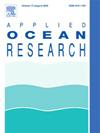End-to-end underwater acoustic target classification with frequency separation strategy
IF 4.3
2区 工程技术
Q1 ENGINEERING, OCEAN
引用次数: 0
Abstract
Most underwater target classification methods require data preprocessing to convert waveforms into spectrograms. Recent advancements have led to the emergence of waveform-based approaches that directly extract discriminative features from raw acoustic signals, eliminating the need for preprocessing. However, waveform-based architectures often exhibit inferior classification performance compared to spectrogram-based methods. This study identifies two key limitations of existing waveform-based approaches: (1) the lack of explicit frequency feature extraction mechanisms, and (2) information degradation due to downsampling. To address these challenges, we propose an end-to-end frequency separation network (FSNet), which includes two innovative components: a frequency separation (FS) module that explicitly captures discriminative frequency characteristics, and a scale-adaptive max pooling (SAMP) layer that preserves critical information during dimensionality reduction. Comprehensive evaluations on ShipsEar and DeepShip datasets demonstrate that our framework achieves competitive accuracy performance (82.91% on ShipsEar and 78.39% on DeepShip) while maintaining exceptional computational efficiency, requiring only 0.49M parameters—over three times fewer than the second-smallest model.
求助全文
约1分钟内获得全文
求助全文
来源期刊

Applied Ocean Research
地学-工程:大洋
CiteScore
8.70
自引率
7.00%
发文量
316
审稿时长
59 days
期刊介绍:
The aim of Applied Ocean Research is to encourage the submission of papers that advance the state of knowledge in a range of topics relevant to ocean engineering.
 求助内容:
求助内容: 应助结果提醒方式:
应助结果提醒方式:


